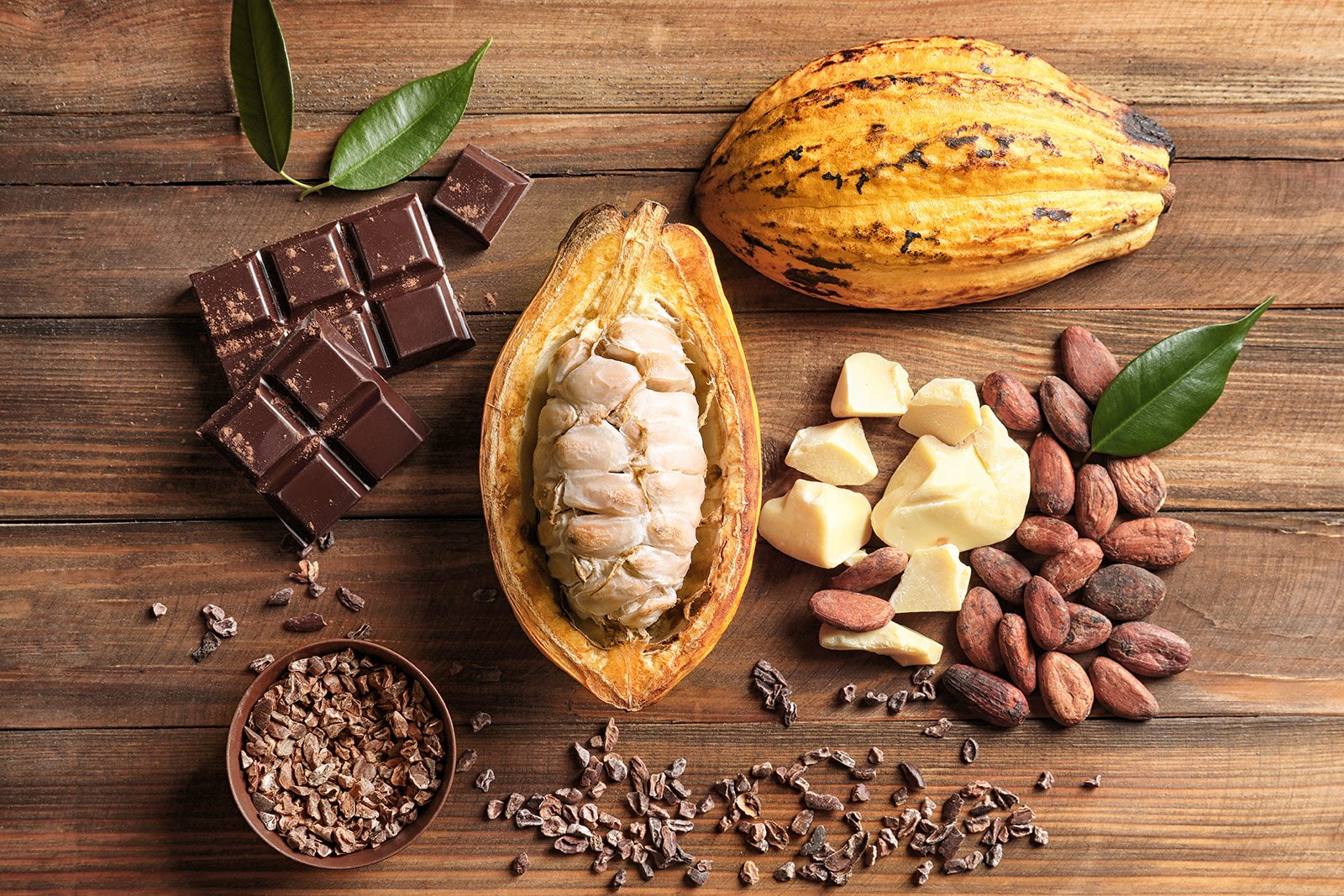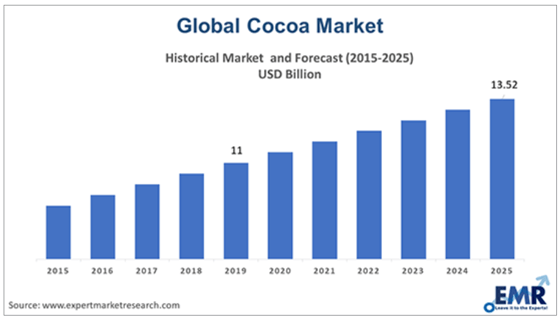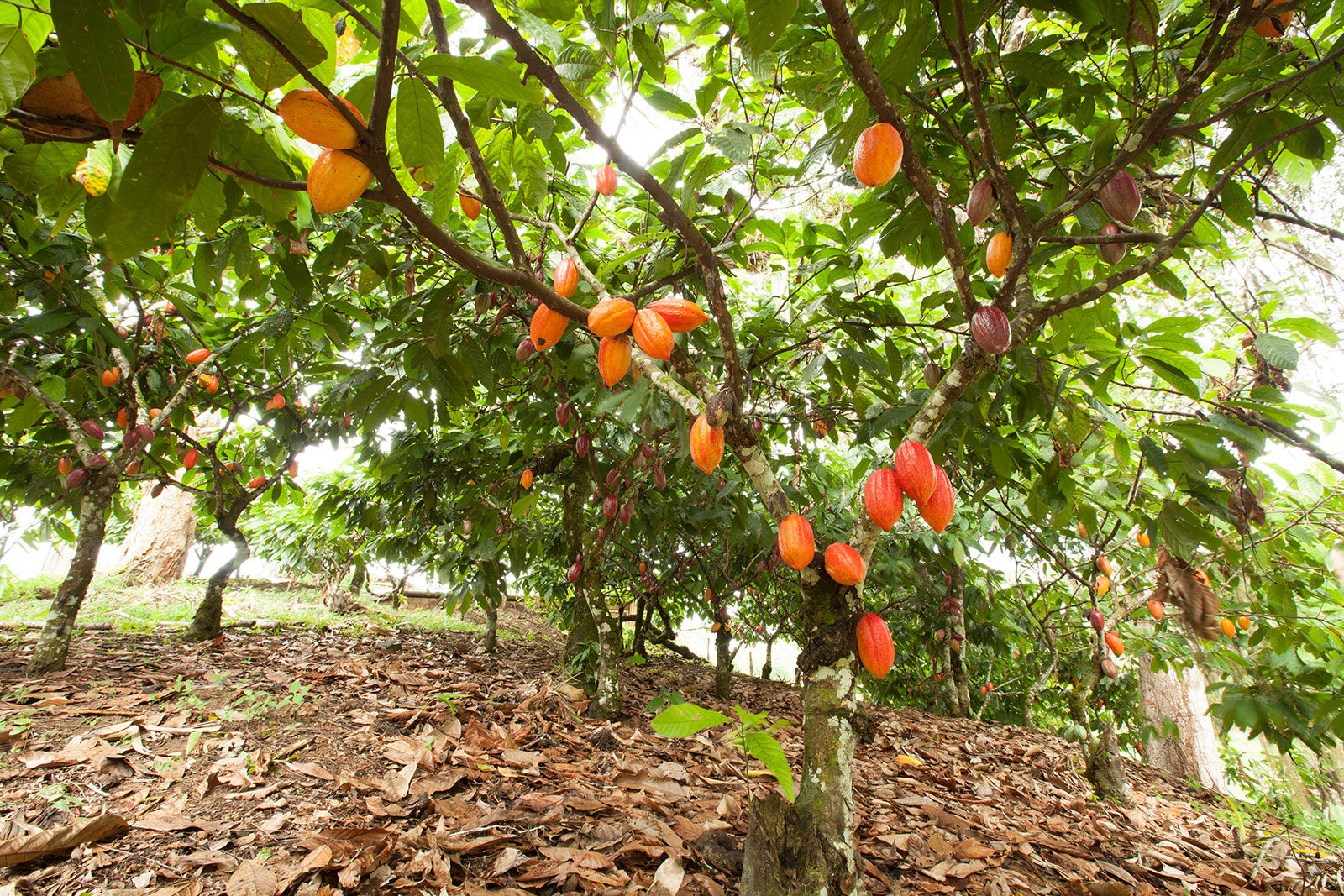For Easter, we wanted to give you insights on a fascinating industry as well as hints on how you could invest a part of your portfolio in cocoa.
Key takeaways on cocoa
- Cocoa was first cultivated 5000 years ago by the Mayans before being brought back into Europe by the Spaniards.
- 60% of the production is concentrated in a few West African countries.
- The supply and price of cocoa are subject to many external factors, such as the long growing process, the strength of the British pound and the climate.
- There are many ways to get exposure on cocoa, such as futures, ETFs, stocks or CFDs on cocoa.

A brief history of cocoa
Cocoa is derived from the dried and fermented seeds of a plant called the Theobroma Cacao, which means “Food of the gods” in Greek. Cocoa has a long history, as it was first cultivated by the Mayans 5000 years ago. The commodity was discovered by Spaniards when they travelled through Latin America in the 15th century, and it started to become popular in Europe in the 17th century.
Cocoa (or chocolate) is enjoyed in a thousand different ways all over the globe and has become a staple for gifting or traditional celebrations – such as Easter this weekend.
The global cocoa market is expected to grow at a CAGR of 3.4% between 2020 and 2026, to reach a market size of $13.52 billion by 2025, from $11 billion in 2019. The chocolate market is also expected to see an important growth, taking in $182 billion by 2025.
 Global Cocoa Market Growth (Source: EMR)
Global Cocoa Market Growth (Source: EMR)
Why invest in cocoa?
There are a variety of reasons to invest in cocoa or other type of commodities. First, there is a speculative dimension: with a unique concentration and production cycle very dependent on externalities, price may vary sharply depending on weather and politics.
Some traders believe that the demand for cocoa will soon rise. There are a couple reasons for this. Emerging markets are getting wealthier, and the demand for chocolate, a luxury product, may rise. Also, the health merits of dark chocolate have finally been recognized, making it far more popular for a wider part of the population.
Finally, investing in cocoa or other commodities is also a good way to diversify one’s portfolio because it is uncorrelated with other traditional financial assets.

What are the main factors affecting the price of cocoa?
There are 6 main factors influencing the price of cocoa, namely: supply, the climate, the production cycle, infrastructure and transportation, consumer preferences and the British pound.
- Geographic location of the plantations: the cocoa production is heavily concentrated geographically, with 60% of the total production coming from a few West African countries. Any political issue – which the Ivory coast has already experienced since its independence – can have an impact on cocoa volumes and prices.
- A hefty climate: cacao is a delicate plant with specific needs. It requires a wet weather and a shining sun to be happy. Without these ideal conditions throughout the 5 years it takes to mature, the production can be heavily damaged. Drought or heavy rain are big enemies of cocoa.
- A complex production cycle: with the growing process taking 5 years, the market supply can hardly ever react to a demand change. As cocoa is also very perishable and cannot be kept very long, it is not rare to see shortages and spikes in prices. On the contrary, we can also have times of oversupply, which could pressure down on the price.
- Transportation is not always easy: being grown in impoverished parts of the world with sometimes very limited infrastructure, the transportation of the goods can be a challenge. Poor road conditions due to excessive rains for example, can severely impair the transit, creating shortages and increase prices too.
- Changing consumer preferences: This is a positive impact. With dark chocolate being more accepted as a “healthy” food, the demand for chocolate keeps rising in developed countries. Furthermore, the production of dark chocolate requires more cocoa than with milk chocolate. Emerging countries getting wealthier are also expected to consume more chocolate in the coming years. There is though, a growing concern about obesity and healthy living: dark chocolate may be healthier, but it also holds way more fat. Does it mean we will stop eating chocolate? We have our doubts.
- The British pound, mate: cocoa is one of the last commodities still being traded in British pounds. If the pound happens to weaken, cocoa is becoming more expensive on the London’s futures market. However, US cocoa futures are traded in dollars.
- Moves for… no reason: as a very volatile commodity, it does happen that the price fluctuates without us being able to trace it back to a specific reason.

Cocoa farm: Bean have not fallen yet !
How can I trade cocoa?
Futures: futures are derivative financial contracts which obligate parties to transact at a specific time and price in the future. On the Intercontinental Exchange (ICE) or the New York Mercantile Exchange (NYMEX), contracts on cocoa are based on 10 metrics tons of the commodity.
These contracts have expirations for the months of March, May, July, September and December. (Links on platform) When investing in futures, you are betting that the value of your contract will go up as the commodity price goes up as well.
Cocoa ETNs: One of the simplest ways to buy some cocoa-related equities is through an Exchange-traded notes (ETN). There are only two ETN based on cocoa, which are the iPath Dow Jones-UBS Cocoa ETN and the iPath Bloomberg Cocoa Subindex ETN (links). These instrument tend to replicate the returns one would earn if he were to invest in cocoa futures.
Cocoa CFDs: Contracts-for-difference (CFD) can also be a great way to bet on cocoa prices. The value of a CFD is the difference between the price of the commodity at the time of purchase and the current price. It is a good alternative to get exposure to cocoa without having to own the underlying cocoa asset.
Cocoa stocks: This is a harder pick as there is no pure-play global cocoa company engaged in the production and sale of cocoa. You can nevertheless pick chocolate-producing companies, which have an important exposure to the commodity, such as:
You can also have a look at companies active in the importation and transformation of the commodity:






